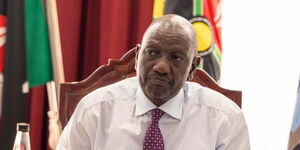Kenya and other East African nations within the Greater Horn of Africa have been urged to prepare for heavier-than-usual rainfall between June and September, with governments advised to maintain emergency response measures.
According to the latest forecast by climate scientists at the IGAD Climate Prediction and Applications Center (ICPAC), released during the 70th Greater Horn of Africa Climate Outlook Forum (GHACOF 70), there is a 55 per cent probability of above-normal rainfall in western Kenya, central Sudan, eastern South Sudan, parts of south-western and northern Ethiopia, and eastern Uganda.
The coastal areas of Kenya also have a high chance of below-average rainfall during the four months, even as the current rains continue to have diversified effects over the region.
The same weather pattern might be experienced in the coastal areas of Somalia, northwestern South Sudan, and southeastern Ethiopia.
''The onset of rains is likely to be normal over most parts of the region, with a few regions that are expected to have an early onset. However, in parts of western Ethiopia, a delayed onset is more probable,'' the forecast read in part.
In terms of temperatures, Kenyans have been advised to brace for warmer-than-average conditions despite the rains for the duration.
''The temperature forecast shows a likelihood of warmer-than-average conditions over much of the region, with higher probabilities over southern Ethiopia and Somalia, eastern Kenya, and northern Sudan. Conversely, average to below-average temperatures are expected over the IGAD-Karamoja cluster, Djibouti, Eritrea, central Sudan, and northeastern Ethiopia," IGAD added in part.
The regional weatherman has warned that while the wetter conditions would bring opportunities for agriculture and water access, they also raise the risk of flooding and waterborne diseases.
Additionally, ICPAC called on both regional and national authorities to take proactive measures to enhance preparedness and response efforts.
The experts emphasised the need for prior planning, warning that increased rainfall across various river basins in Kenya and the region could lead to a surge in displacement due to flooding.
On a positive note, the experts noted that improved access to pasture and water would reduce pastoralist mobility, thereby lowering the risk of inter-communal and human-wildlife conflicts.
Meanwhile, IGAD's Deputy Executive Secretary of IGAD emphasised the urgency of collective action in response to the climate extremes that the region has been facing.
''The Greater Horn of Africa is experiencing unprecedented climate extremes, ranging from droughts and floods to unpredictable rainfall, putting our food systems, water resources, and livelihoods at serious risk. We must institutionalise climate services and work together across borders and sectors to ensure climate risks are integrated into every decision. The future of our region depends on it," he added.












